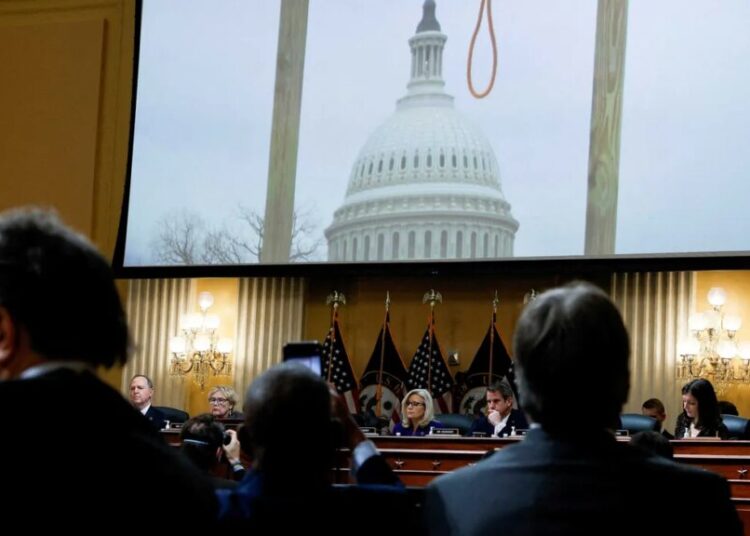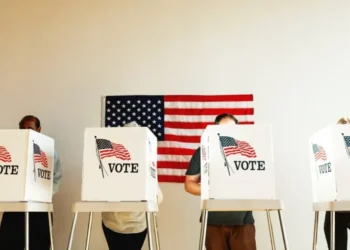China rebuffed President Donald Trump’s proposal for nuclear arms control talks as “unreasonable,” even as Beijing has more than doubled the size of its arsenal, unveiled an expansive array of nuclear-capable missiles and laid the groundwork for new nuclear tests this decade.
China has a stockpile of about 600 nuclear warheads — a small fraction of the number held by the United States or Russia, which have 3,700 and 4,300, respectively, according to the Stockholm International Peace Research Institute, a Swedish think tank.
But, since 2020, the Chinese military has expanded and modernized its arsenal far faster than any other nuclear power, and its buildup has become a serious challenge to post-Cold War efforts to prevent another arms race, analysts say. Beijing’s unwillingness to engage with Washington about its nuclear buildup remains a point of significant disagreement in U.S.-China relations, even after Trump and Chinese leader Xi Jinping eased trade tensions with a truce in South Korea last month.
Here’s what you need to know about China’s nuclear weapons program.
How fast is China’s nuclear arsenal growing?
The exact size of China’s nuclear arsenal is one of the Chinese military’s most closely guarded secrets, but independent experts and U.S. officials agree that it has ballooned in the past five years.
After the country’s last confirmed nuclear test in 1996, outside estimates put its stockpile of warheads between 200 and 300. In its annual report on the Chinese military, the Pentagon estimated in 2020 it was in the “low 200s.”
But that number has increased dramatically since then. By the end of last year, the same report estimated China had more than 600 warheads, with the potential to reach to 1,000 by 2030.
Since 2020, China has also dramatically expanded its main nuclear testing site in the country’s remote northwest by adding buildings, electrical power lines and shafts drilled deep into the ground.
Experts say those underground chambers could be used to conduct nuclear tests that would be difficult to detect or for lower-level tests that assess safety and reliability of weapons without causing an explosion.
What does the buildup mean for the U.S.?
The world was alerted to this paradigm shift in China’s nuclear weapons program in 2021, when analysts spotted vast fields of missile silos being constructed in remote parts of northwest China.
By last year, the country had some 350 silos — nearly as many as the United States. Silos are underground vertical shafts of reinforced concrete and steel that are used to store and launch ballistic missiles.
The silo fields were just the first of several signs that Beijing was developing new ways to potentially fire nuclear warheads as far as the continental U.S. and to strike American bases in Asia with smaller — but still powerful — low-yield nuclear weapons.
Traditionally, almost all China’s operational nuclear weapons were loaded onto intercontinental ballistic missiles mounted on the back of trucks. They could be driven around the country in unpredictable patterns to avoid being taken out by a preemptive strike.
China is now openly showing that it is developing a greater range of options — including missiles that can be launched from silos, dropped from long-range bombers and fired from submarines. A grand military parade in Beijing in September was the first time China displayed its ambitions to operate a full nuclear triad.
At the parade, China also unveiled three nuclear-capable land-based missiles, including a mysterious truck-launched intercontinental ballistic missile, the DF-61, that appeared to be an improvement on existing missiles capable of hitting the continental U.S.
Chinese experts claimed that a liquid-fueled missile paraded through Beijing was capable of hitting anywhere on Earth and can target multiple locations simultaneously using a combination of nuclear, conventional or decoy warheads — a technology that is harder for U.S. missile-defense systems to intercept.
China’s military buildup — whether conventional or nuclear — is all about measuring up to the U.S. and making sure Washington has no interest in using force against China, said Victor Gao, vice president of the Center for China and Globalization, a Beijing-based think tank.
“I think, increasingly,” he said, “Washington gets the message.”
What do we know about Beijing’s motives?
Chinese officials have not explained — or even acknowledged — that they have apparently changed their policy of maintaining the minimum number of nuclear weapons required to deter adversaries from attack. They have also not denied the buildup.
Beijing still says it has a policy not to use nuclear weapons unless it is attacked first.
But Chinese officials have increasingly talked about the need for a stronger “strategic counterbalance” — a phrase that probably means they see more formidable nuclear weapons as necessary to tip the balance of global power toward Beijing.
In March 2021, Xi call for China to “accelerate the construction of an advanced strategic deterrence” as part of sweeping upgrades to the People’s Liberation Army Rocket Force, which manages the country’s nuclear arsenal.
Xi may believe that having more nukes will help him achieve “unification” with Taiwan, the self-governing island democracy that Beijing claims as its territory, analysts say.
Gen. Anthony J. Cotton, commander of the U.S. Strategic Command, told Congress in March that China’s investment in additional land, sea and air-based launch systems for nuclear warheads was part of the Chinese military’s preparations for a war over Taiwan.
U.S. intelligence and military officials have said that Xi has instructed the PLA to be ready to seize Taiwan by 2027, although they add that the timeline does not mean he will order an invasion that year.
What are the prospects of arms-control talks?
Trump’s trade truce with Xi was overshadowed by the U.S. leader’s decision, on the morning of talks, to direct the Pentagon to begin testing nuclear weapons “on an equal basis” with China and Russia.
Trump followed up in a speech in Miami last week by saying that his administration may be “working on a plan to denuclearize” China, Russia and the U.S.
The proposal was met with a sharp rebuttal from Beijing. “China’s nuclear forces are not on the same scale as those of the U.S. and Russia,” Mao Ning, a spokesperson for China’s Foreign Ministry, said when asked about the prospect of talks last week. “It would be unfair, unreasonable and impractical to require China to join,” she said.
This is not the first time Trump has attempted to enter negotiations with Beijing about its nuclear weapons buildup.
In his first term, the administration said it would invite China to discuss changes to the New Strategic Arms Reduction Treaty, a pact between Russia and the United States that is set to expire in February. No such talks were ever publicly confirmed.
The Biden administration also attempted to engage China on arms control but talks stalled after reaching an agreement with Xi that humans — not artificial intelligence — should decide whether to use nuclear weapons.
China has previously pushed for the U.S. to adopt a no-first-use policy as a precondition for progress on talks. The Pentagon declined because that would undercut the credibility of U.S. extended deterrence for European allies, said Joseph Rodgers, a specialist on nuclear nonproliferation at the Center for Strategic and International Studies, a Washington think tank.
According to Gao, China’s position is that the U.S. must show sincerity by either reducing its number of nuclear warheads to the same as China’s or by allowing Beijing to expand its to stockpile to parity.
Even with recent advances, China is still far from a nuclear peer with the U.S., said Eliana Johns, a senior research associate at the Federation of American Scientists, a Washington think tank. “China’s air-launched and sea-launched nuclear capabilities are nowhere near the size and sophistication of Russia’s or the United States’,” she said.
The post What to know about China’s newly modernized nuclear arsenal
appeared first on Washington Post.




